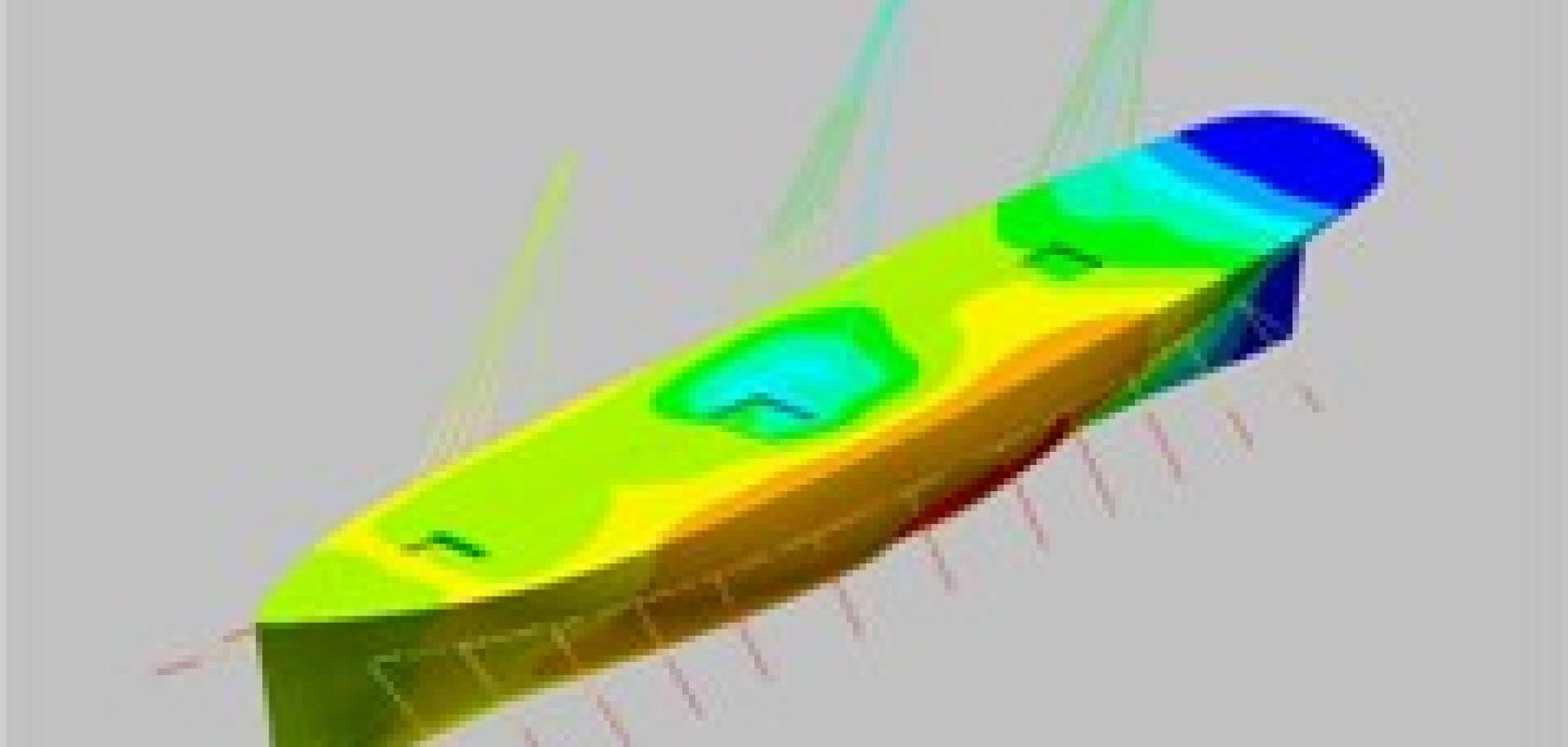Scientists are using sophisticated computer models to determine how to dismantle and reassemble the fire-damaged Cutty Sark ship.
The University of Greenwich and the Cutty Sark Trust scooped the overall 'Knowledge Transfer Collaboration' award at the London Development Agency's London Knowledge Transfer Awards earlier in the month for their work on the project.
Five years ago, the Cutty Sark faced a death sentence with experts predicting the Victorian tea clipper would collapse within a decade if nothing was done. And yet the Cutty Sark Trust feared that the very act of restoration could endanger this precious icon of the nation's maritime heritage. So chief engineer Peter Mason called in the university to predict how the decaying wooden hull and corroded iron frame would respond to restoration.
Professor Chris Bailey, director of the Computational Mechanics and Reliability Group at the University of Greenwich, explains how computer modelling was used within such a unique project: 'We are applying computer modelling technology to the problem of how to restore the Cutty Sark's rotting pieces, without bringing down the entire structure. With our software, we can take the ship apart - and put it back together again - and see if it collapses. So when engineers tackle the real thing, they know that they will be going about the job in the best possible way.’
He tells scientific-computing.com: 'We have used a number of techniques. In particular finite element methods, which are numerical techniques that solve partial differential equations governing displacements/strains and stress. Complete digital model of this composite ship have been generated and analysed using our computer systems at Greenwich.'
But such a project brought with it a number of challenges, as Bailey says: 'Capturing the geometric shape of the ship was an initial challenge as it has resided in dry dock for 50 plus years and the original design drawings were destroyed many years ago. Photogrammetric and laser scanning were used to capture the geometry and this data was then used to build the CAD model.'
Bailey adds: 'The other challenge was representing the composite (i.e. wood and iron) structure of the ship's hull within the digital model. This was achieved using a novel formulation for the mathematical finite element representation of this hull. This was validated with experiments within our engineering laboratory.'
Such models are aiding the restoration in a number of ways. Firstly, modelling has helped to identify how to safely dismantle the vessel so that materials could be restored. The simulations have also identified the feasibility of a unique new support structure for the vessel to ensure that will hold it in the air and, finally, ensured that the dry dock in future will be well behaved.
Computational fluid dynamics has also been used within the project, as Bailey says: 'We have also used computational fluid dynamics to help understand what the flow patterns around the vessel would have been like and these are being used by the architects to design features for the new museum.'
Another project is building at a decision support system for condition-based maintenance, according to Bailey, that will analysis data from sensors, placed around the ship, to guide future maintenance and hence help ensure that the vessel can be maintained and conserved for at least another 50 years. These techniques are based on statistical methods (both general and Bayesian methods) and physics-based damage (corrosion) models and sensors.


